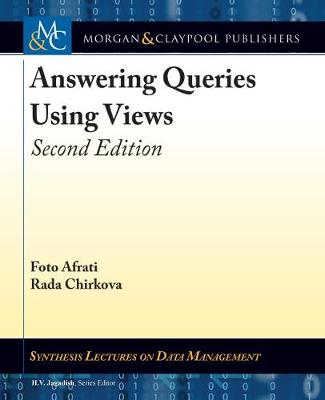Synthesis Lectures on Data Management
1 total work
The topic of using views to answer queries has been popular for a few decades now, as it cuts across domains such as query optimization, information integration, data warehousing, website design and, recently, database-as-a-service and data placement in cloud systems.
This book assembles foundational work on answering queries using views in a self-contained manner, with an effort to choose material that constitutes the backbone of the research. It presents efficient algorithms and covers the following problems: query containment; rewriting queries using views in various logical languages; equivalent rewritings and maximally contained rewritings; and computing certain answers in the data-integration and data-exchange settings. Query languages that are considered are fragments of SQL, in particular select-project-join queries, also called conjunctive queries (with or without arithmetic comparisons or negation), and aggregate SQL queries.
This second edition includes two new chapters that refer to tree-like data and respective query languages. Chapter 8 presents the data model for XML documents and the XPath query language, and Chapter 9 provides a theoretical presentation of tree-like data model and query language where the tuples of a relation share a tree-structured schema for that relation and the query language is a dialect of SQL with evaluation techniques appropriately modified to fit the richer schema.
This book assembles foundational work on answering queries using views in a self-contained manner, with an effort to choose material that constitutes the backbone of the research. It presents efficient algorithms and covers the following problems: query containment; rewriting queries using views in various logical languages; equivalent rewritings and maximally contained rewritings; and computing certain answers in the data-integration and data-exchange settings. Query languages that are considered are fragments of SQL, in particular select-project-join queries, also called conjunctive queries (with or without arithmetic comparisons or negation), and aggregate SQL queries.
This second edition includes two new chapters that refer to tree-like data and respective query languages. Chapter 8 presents the data model for XML documents and the XPath query language, and Chapter 9 provides a theoretical presentation of tree-like data model and query language where the tuples of a relation share a tree-structured schema for that relation and the query language is a dialect of SQL with evaluation techniques appropriately modified to fit the richer schema.
